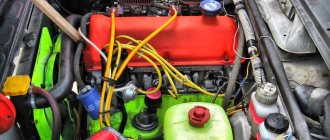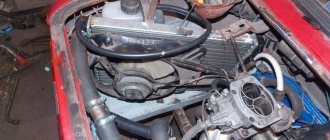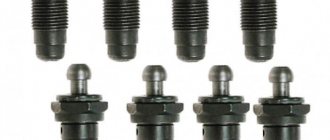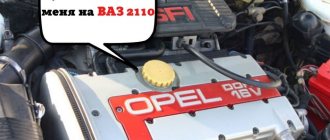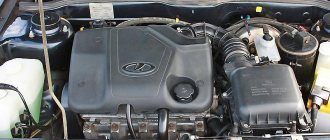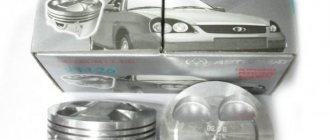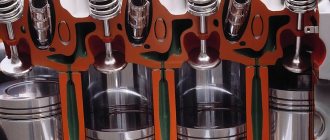Almost every car owner asked the question: “How and with what help can you wash the engine of oil and other contaminants?” During long-term operation of a vehicle, a large amount of contaminants of various origins accumulates in the engine compartment. In addition to the aesthetic appearance, this problem is important from a technical point of view. After all, a large accumulation of dirt in the power unit can affect the correct operation of the engine system. That is why it is very important to keep the engine of your vehicle clean.
Many owners turn to car washes for this service, where they clean the power unit with a jet of water under high pressure. This service has a low cost, but there is a possibility of water getting into electrical equipment, which can disrupt the operation of the generator, starter and other important systems. In this article we will look at how, with what and in what sequence you should wash the engine from oil and dirt at home.
Why is dirt under the hood dangerous?
A car's engine is its heart. Even small accumulations of dirt and oil can cause it to malfunction. First of all, pollution affects the thermal regulation of the engine. As you know, the power unit largely consists of metal elements. Thus, layers of dirt and oil accumulating on the walls of its elements can contribute to overheating. In addition, there is also a radiator in the engine compartment, which is responsible for cooling the engine. Large layers of dirt, dust, and insects accumulated on the radiator honeycomb will disrupt the heat exchange process.
The simplest and most reliable way to monitor the technical condition of a car, including the engine, is a diagnostic scanner. The cost of the device is about 2000 rubles, which will pay for itself in 1-2 trips to the service station. Of those currently on the market, we can recommend Scan Tool Pro Black Edition
This device is compatible with most old and new cars, provided there is an ODB2 connector. The advantages of this particular model include not only engine diagnostics, but also related vehicle systems. Connection occurs via bluetooth (for Android devices) and wi-fi (for iOS). All information about the condition of the car and a description of existing problems is displayed on the screen of the phone or tablet in Russian.
Precautionary measures
To clean the engine, many car owners use folk remedies. When using such means, you must carefully ensure that the electrical part of the equipment does not fail.
When using household chemicals, you must wear a mask and gloves to protect your respiratory system and hands. You will also need goggles, arm guards and work clothes. When using splashing drugs, do not allow them to come into contact with bare skin or eyes.
Do not remove the mask until the chemical under the hood has dried if you continue to wash the engine. Do not allow corrosive substances to come into contact with the battery, otherwise you will lose it.
Similar article How to increase the power of an 8 valve VAZ 2114 engine with your own hands
As you can see, it is easy to wash the engine, but only by protecting yourself from emergency situations. Now let's move on to the washing procedure itself.
Why wash the engine?
Let's look at the main reasons why it is worth monitoring the engine compartment and cleaning it in a timely manner.
Firstly, a power unit that is promptly cleaned of dirt, oil and other contaminants will last much longer. The engine requires proper operation of the cooling system, so it is important to monitor and clean it promptly.
Secondly, the accumulation of dirt accelerates the wear of engine parts. Large layers of dirt and oil begin the corrosion process, as a result of which small metal parts of the elements enter the engine oil. Thus, these contaminants circulate throughout the engine system and settle inside. This leads to a significant reduction in engine life, which leads to disruption of its operation and loss of technical characteristics.
Thirdly, in addition to the power unit, there are a large number of electronic systems under the hood. Contamination can disrupt the operation of ignition systems. In addition, large layers of oil can lead to emergencies such as fire. An inadvertent spark or exposure to exhaust gases may cause a fire.
I think that every car owner will agree that when you open the hood, it is much more pleasant to look at a clean engine.
The most effective cleaning method
It is best to adhere to the following engine washing algorithm. Before starting, you need to insulate with polyethylene and tape all components vulnerable to water: electrical connectors, generator, air filter air intake, relays, etc. The battery needs to be removed. For greater efficiency, the engine should be warmed up at idle, but it should not be hot.
A special foam cleaner removes dirt best. It must be applied to all surfaces and wait a few minutes for it to be absorbed. Active, stable foam very effectively removes the oldest and most burnt stains without harming plastic and rubber. For hard-to-reach places and the heaviest dirt, you should use a stiff brush. Then we wash off the detergent with a weak stream of water, wipe the accessible areas with a clean rag and remove all the applied insulation.
Cleaning the battery
The battery is treated with a mixture of water and baking soda in certain proportions. This procedure will perfectly protect the terminals from corrosion, improve engine starting and slightly increase battery life.
Detergents
Any car, like a person, requires care and hygiene. Many car enthusiasts ask the question: “How to clean the engine?” Few people know that washing a power unit is a rather complex process that requires certain knowledge. After all, it is not possible to clean the engine compartment with ordinary water and a brush. To perform this process efficiently, it is necessary to resort to the use of specialized engine cleaning products.
Many car enthusiasts use high-pressure water equipment to perform cleaning. The problem is that a high-pressure jet can cause mechanical damage to electrical equipment, wiring, and gaskets, which can result in engine failure. This method is quick, but there is a high risk of damage to electronic equipment and ignition systems.
In addition to the use of washing installations, the cleaning method with various fuel compositions, for example, kerosene, diesel fuel or gasoline, is also common among car owners. This method has a number of disadvantages. Gasoline is the most unsafe of the above mentioned products. It has a high risk of fire and produces explosive vapors.
Kerosene or diesel fuel, compared to gasoline, is the least safe for cleaning engine walls. They have a low degree of combustion, but create other unpleasant problems. After washing with kerosene or diesel fuel, the heating walls of the engine will begin to evaporate acrid smoke. This method is the least safe, and the evaporating smoke from kerosene will cause discomfort to the owner and passengers of the car.
More experienced car enthusiasts use specialized detergents to clean the engine at home. Each product is individual and has a different composition. This method is the most effective and safe, but even in this case you need to be careful. Chemicals can oxidize metal engine elements, as well as destroy plastic and rubber elements.
There is a huge variety of detergents designed specifically for external engine washing. There are two main types of chemicals for washing engines:
- Means for removing various types of dirt (universal).
- Means for removing a specific type of contamination, for example, to clean the engine from oil.
Such products are sold in the form of plastic or glass containers, or in the form of aerosols for spraying.
Chemicals are very individual, so it is very difficult to choose the most effective cleaning product. In most cases, a one-time use of such compositions will not bring the desired result, so washing is carried out repeatedly. Before choosing such a product, you need to carefully study its composition and it is better to give preference to more well-known brands.
Tips and tricks
Almost every car wash has a warning that the staff is not responsible for the condition of your car after washing the engine. This is why you need to take care of your car yourself:
- ask the washer to cover important electronic components in your engine compartment (for example, distributor cover, fuse box, ECU, switch). To do this, you can use cling film, plastic bags and tape;
- Using a high-pressure washer, you need to wash the engine from a distance. In no case should you bring the nozzle close, as the enormous pressure can damage electrical connections and break the tightness of sealing products;
- Every self-respecting car wash should have the ability to supply compressed air. Therefore, you should definitely blow out the engine compartment, which will significantly reduce the likelihood of unpleasant consequences. Particular attention should be paid to all electrical connectors and sensors;
- After washing, especially in winter, it is advisable to let the car run for 15-20 minutes to ensure that it gets rid of moisture.
These recommendations, of course, must be followed if you want to properly wash the engine with your own hands.
How to properly prepare a car for washing the engine compartment
Washing a car engine must be approached very responsibly, since this process requires knowledge of certain features. Improper cleaning of the engine compartment can lead to disastrous consequences.
To begin with, you need to choose a parking place in advance. The best place would be a garage. The choice of parking place is important, since after cleaning the car it is not recommended to use it for 10-12 hours. The engine needs to dry out.
In addition, it is necessary to check all electrical equipment for damage. Under no circumstances should there be exposed wires or other breaks or crevices where moisture could get in.
Prepare in advance all available and necessary means for cleaning.
If a place for cleaning has been chosen, all rules have been followed and available means have been prepared, then you can begin the cleaning process.
What is the best way to wash the engine? Accessories, washing equipment
In order to wash the engine, well-known high-pressure apparatuses such as Karcher are used. With its help, washing will turn into a game, everything is extremely simple, you press a button and direct the pressure to the places that require washing.
Important! It is not recommended to use high pressure to wash the engine; it is advisable to use minimal pressure or wash the engine without pressure at all. If you don't have this washing attachment, you can use a regular rubber hose. In hard-to-reach places, you can use a brush with a handle.
Step-by-step instructions for washing the power plant
In order to clean the power plant correctly and without consequences, you must adhere to the following rules and follow the instructions.
Step 1. Preparatory stage.
It is recommended to carry out the cleaning process in warm and dry weather. This way, the moisture remaining in the engine compartment will evaporate several times faster.
First, you need to prepare all available means in advance. We will need: personal protective equipment, foil or polyethylene, tape, a brush of different sizes (medium and small, for hard-to-reach places), a sponge, a rag, a cleaning agent, a container with water, a container for collecting remaining dirt.
Cleaning is carried out at an engine temperature of 50-60 degrees. If the engine has been started, then it is necessary to allow it to cool to the desired temperature. Otherwise, you need to start and warm up the engine to the specified temperature.
Next, open the hood and remove the terminals from the battery.
After that, using the prepared polyethylene or foil, we cover all the places where the electrical equipment is located and fix them with tape. We pay a lot of attention to the idle speed sensor, since if you overdo it and fill it with water, then there may be problems with idle speed.
Step 2. Precautions.
Personal protective equipment must be used. First of all, these are rubber gloves. Chemical cleaners can be harmful to your skin. In addition, contaminants in the form of oil are very difficult to remove. Therefore, rubber gloves and work uniform will be an integral part of this process.
In addition, we recommend using safety glasses whenever possible. Sprays and drops of cleaner may get into your eyes. Glasses will help prevent drops of cleaner, dirt and other foreign objects from getting into your eyes.
Step 3: Apply Cleaner
We carefully read the instructions for the purchased cleaner.
First, you need to rinse all contaminated surfaces with a small amount of water. Then the chemical is applied. If the product is in the form of an aerosol, then it is simply sprayed onto the required areas. If the product is in the form of a solution, then it is applied using a sponge. We recommend using a toothbrush to clean hard-to-reach places.
After application, wait the required time for the cleaner to interact with the contaminants. The duration is usually indicated in the instructions.
Step 4. Safety and environmental measures.
First of all, you need to carefully apply the cleaner. These mixtures are highly flammable and explosive, so safety regulations must be followed.
During the washing process, it is necessary to ensure cleanliness and not pollute the environment. If possible, any remaining dirt and oil should be collected in a container specially prepared for this purpose.
Step 5. Final stage
Finally, we rinse all the places where the cleaner was applied. It will be convenient to use a hose with low water pressure. It is worth noting that the engine compartment must be washed with caution, avoiding contact with electrical equipment, even though they are protected with polyethylene or foil.
After washing, we perform a visual inspection. If not all contaminants have been removed, then we carry out repeated cleaning.
It doesn’t take a lot of time or money to clean your engine from oil and dirt. You just need to follow the instructions and rules, and then your engine will shine and will not fail at the right time.
How to clean an engine from oil and dirt with your own hands
Diesel fuel, gasoline and kerosene are used by many motorists, but this choice is not very good - there is a danger of fire or smoke in the future. Various compounds can help you wash your car engine at home.
Experienced professionals emphasize that for home cleaning of engine oil, you should prefer universal compounds, especially if cleaning is done regularly and few oil stains accumulate. In advanced cases, the power unit has to be washed with special means.
Aerosols are the most suitable for removing oil from an engine in the garage - this product is well distributed and reaches even hard-to-reach places.
Algorithm of actions
- The washing process begins with a slight warming up of the engine (no more than 5 minutes). The temperature of the unit should ideally be about 50 degrees. Under no circumstances should you wash a hot engine, as this can damage its parts. Then the battery terminals are disconnected (primarily the negative terminals). For greater safety, it is better to remove it.
- Then you need to cover with polyethylene all places that cannot be wet (for example, fuses, breaker-distributor, distributor). To fix the film we use adhesive tape. Instead of plastic bags, you can use foil or cling film.
- It is advisable to protect your hands from cleaning agents and stains on the engine. They can damage the skin or cause allergies. Rubber gloves are perfect for these purposes, but some people use regular knitted (fabric) products for construction work. The first option is more preferable, since rubber ones do not allow liquids to pass through. Cleaning the engine is done with a soft cloth or sponge, with the exception of hard-to-reach places where a brush or brush is used.
- Having washed all the necessary places, rinse them.
- Then we remove the protective film, dry the parts with a compressor (hair dryer, vacuum cleaner) or start the engine so that it dries out from its heating. In addition, you can use towels (paper or cloth) to dry washed parts. It is advisable not to wipe the engine with the same towel that was previously used to treat the battery (it may be damaged by exposure to the corresponding chemicals).
- It is recommended to leave the hood open for 2-3 hours. A completely cleaned and dried unit is the finished result of the work. All that remains is to connect the battery back and close the hood.
How to wash it yourself?
It is advisable to wash (wipe) the car engine with your own hands, since a regular wash at a car service center can be detrimental to the unit. At a car wash, engines are washed with a stream of water under high pressure, which can flood and damage electrics and other parts that are strictly contraindicated from getting wet. In addition, such cleaning will not affect hard-to-reach places. Cleaning is easy once you figure out how to do it yourself.
Only a person who really cares about the car can clean the engine efficiently and delicately . In this matter, you need accuracy, a sufficient amount of materials (rags, paper or cloth towels, cellophane bags, foil or cling film, adhesive tape, a toothbrush or brush and special cleaning agent or household chemicals) and time. In addition, you need to prepare a suitable place. It is desirable (but not necessary) to have a source of water nearby (you can get by with a bucket of water). It is ideal if you have a household mini-washer and a compressor for drying.
When to wash?
The engine must be clean to undergo technical inspection, diagnostics, and to verify numbers when deregistering (replacing it). When selling a car, a neat engine will have a positive impact on the rating from potential buyers. When the engine is clean, fluid leaks are more visible, which allows you to respond faster to the first signs of malfunction. In addition, the carefulness of the car owner is visible to everyone and in relation to the heart of his car.
It is advisable to wash your car engine once every six months (spring, autumn) or a year (after winter). Regular cleaning will reduce the amount of work during the next wash and keep parts in their original form on a new car . It is advisable to clean the main unit of the car in this way in the warm season, so that it dries easily and does not freeze. In addition, due to poor drying of parts after such a procedure, the wiring may become damp, which is extremely undesirable for the car.
Mine at home
Let's consider folk art in the field of washing the space under the hood of a vehicle.
It is quite possible to achieve a decent result with your own hands, without using complex equipment and expensive specialized tools.
To work you will need to prepare:
- plastic bags;
- foil;
- dishwashing liquid;
- sponges;
- mittens;
- toothbrush;
- bristle brush;
- baking soda;
- towels;
- bucket;
- hose.
You can do without a hose. But provided that the water source is not far from the place of work.
Start with preparation. As part of the preparatory activities you will need:
- open the hood and securely fix it;
- turn off the ignition;
- remove the negative terminal from the battery;
- wait for the engine to cool down if it is hot;
- close the air intakes with bags;
- close the distributor, battery, fuse block;
- If possible, insulate wiring and contacts.
The essence of the preparation is to block as much as possible the possible access of water to those components that are not particularly friendly with moisture. This is what foil and bags are for.
Let's start cleaning
Having completed all the steps to prepare the car, you can proceed to the main stage.
At this stage you will need:
- prepare a solution based on warm water and detergent;
- try to avoid getting this composition on the paintwork;
- using regular warm water, moisten the contaminated areas;
- now, moistening the sponge in the solution, begin to remove dirt;
- if the sponge does not help or is not enough, use brushes.
Alternatively, you can use a solution of kerosene and water. It is more effective for heavily ingrained stains.
After removing all dirt, treat all surfaces again with soapy water. Let stand for 5-10 minutes. Now rinse the compartment with a hose under low pressure. Or you can simply rinse with water.
If some elements are not washed well, repeat the procedure for them again.
After rinsing off all the previously applied detergent, arm yourself with paper towels and begin to remove excess moisture. The better you dry the engine, the higher the likelihood of a successful outcome of the entire wash.
When most of the moisture has been removed, remove the bags and foil.
You may ask why they took soda. It's simple. Wipe the battery terminals with a solution of baking soda and plain warm water in a ratio of 1 to 1. This is an excellent remedy for combating oxidation. After all, batteries use acid. And the best acid antagonist is alkali. As you know, baking soda is an alkali.
Once drying is complete, start the engine for about 5 minutes. Let it idle, warm up, and the excess moisture that you didn’t reach will evaporate on its own. It wouldn’t hurt to apply an additional layer of polish or wax specifically for the engine compartment.
